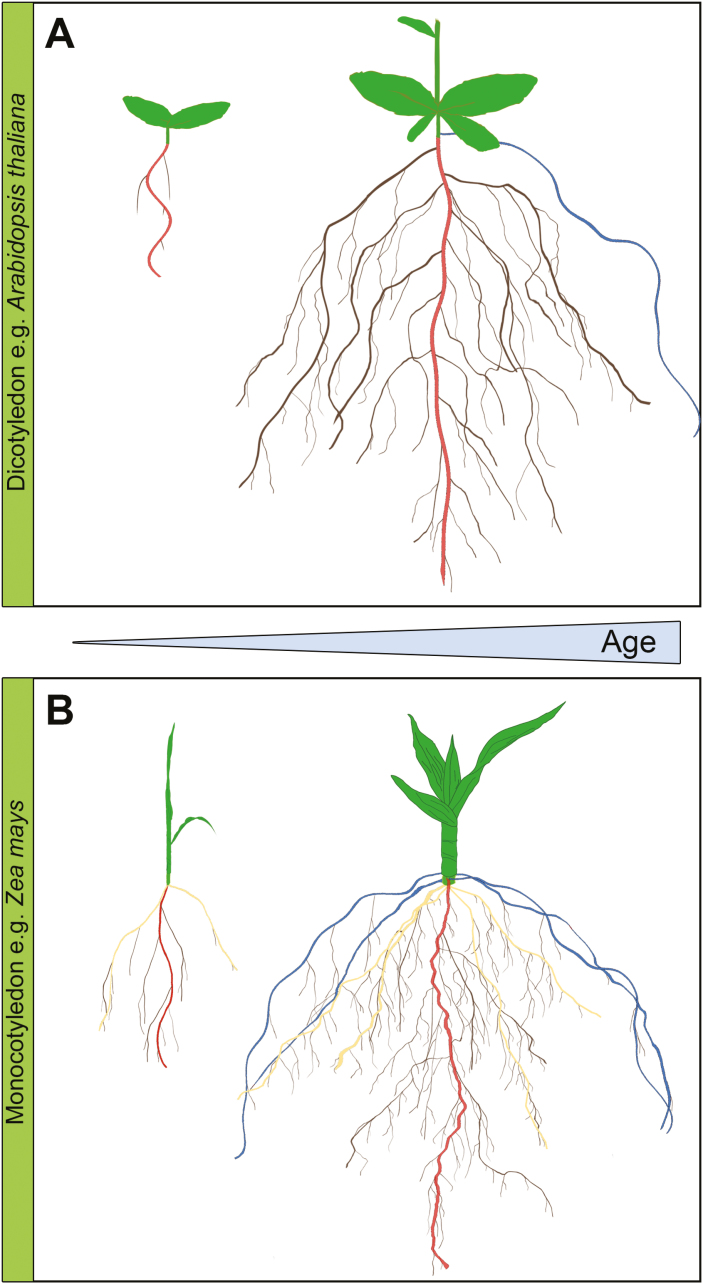Fig. 1.
The RSA of dicots and monocots changes over time. (A) A typical taproot system of dicots (e.g. Arabidopsis thaliana), consisting of embryonic primary root (PR, red) and branching lateral roots (LRs, brown). Ultimately, the LRs will undergo higher order branching to form secondary and tertiary LRs. Adventitious roots (ARs, blue) form at the shoot–root junction. (B) The fibrous monocot root system of Zea mays consisting of an embryonic primary root (PR, red), embryonic seminal roots (SRs, yellow), which originate close to the top of the PR, crown roots (CRs, blue) that originate from the stem, and LR branching (brown) from the PRs, SRs, and CRs. Ultimately, the LRs will undergo higher order branching to form secondary and tertiary LRs.

